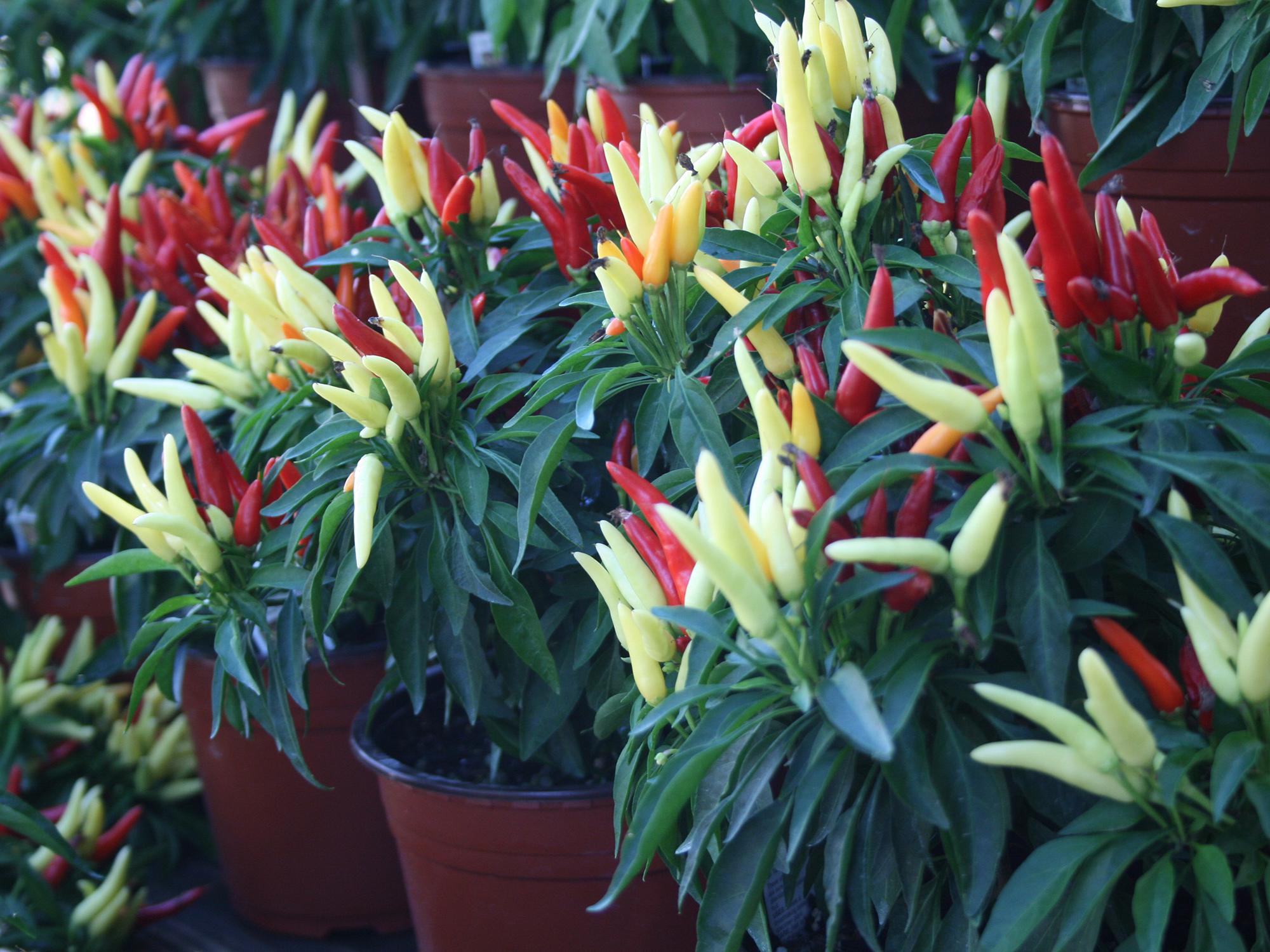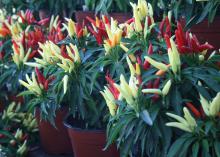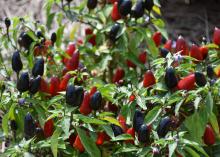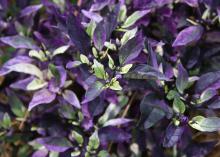Information Possibly Outdated
The information presented on this page was originally released on September 18, 2017. It may not be outdated, but please search our site for more current information. If you plan to quote or reference this information in a publication, please check with the Extension specialist or author before proceeding.
Color fall gardens with ornamental peppers
Late summer and early fall are among my favorite times of the year because the ornamental peppers are starting to really color up.
More and more fellow gardeners are jumping on the bandwagon and planting these beauties in their landscapes. These plants are hot -- in landscape character and accent -- and they carry the garden through the fall season and maybe beyond.
Most ornamental peppers begin setting fruit as the temperatures rise, so the best show is always saved for late summer and continues through the fall as they keep producing. This means you need to set these plants out in the late spring.
I find there is sometimes confusion when the word “ornamental” is used to describe a garden plant. Many folks automatically assume the fruit of an ornamental plant is not to be eaten, which is generally true. Ornamental peppers have been selectively bred for color, but they also could be used to spice up a dish. In fact, most are very, very hot.
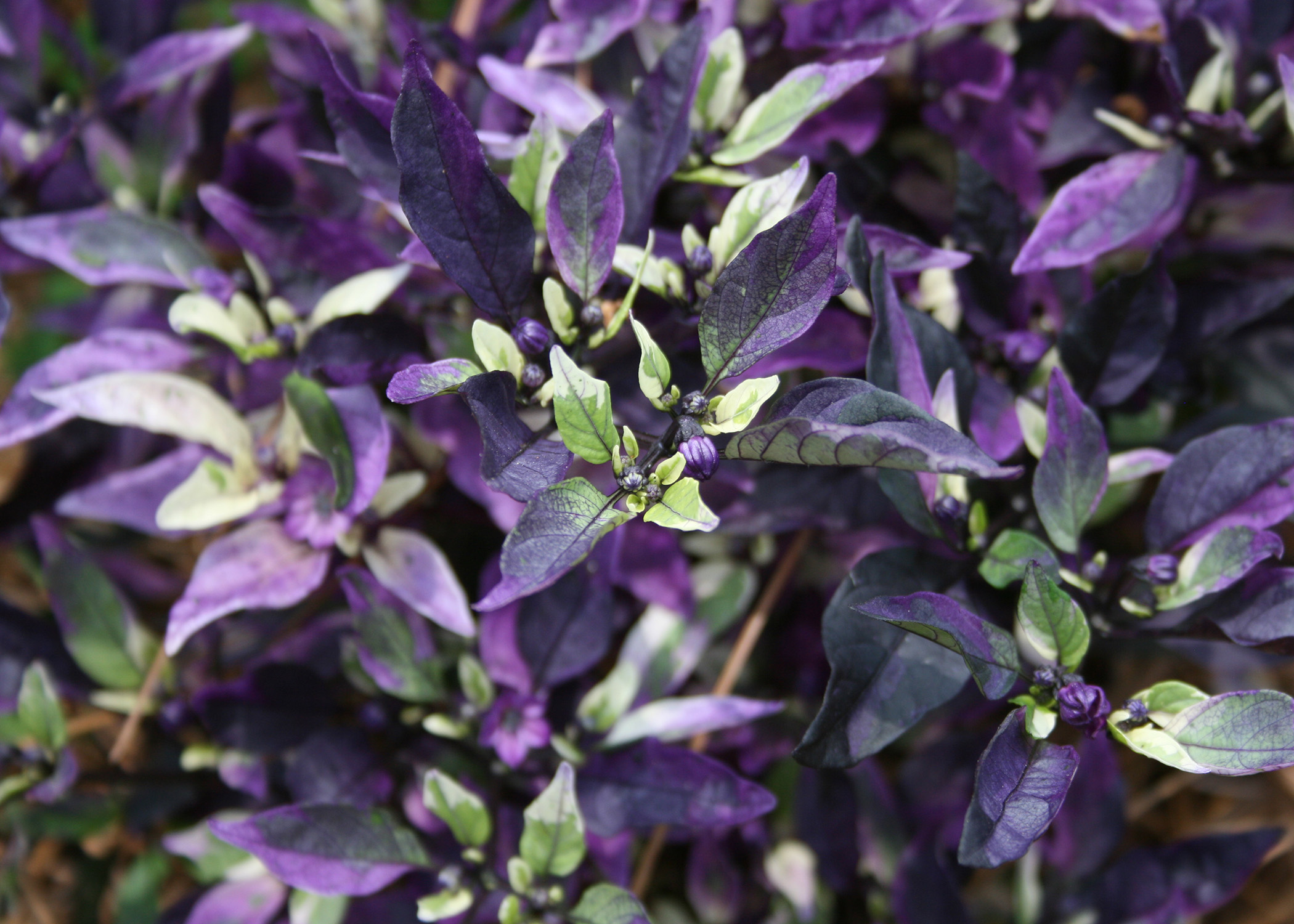 The Purple Flash ornamental pepper plant has purple and green peppers held high above the foliage. (Photo by MSU Extension/Gary Bachman)
The Purple Flash ornamental pepper plant has purple and green peppers held high above the foliage. (Photo by MSU Extension/Gary Bachman)You can see my reaction to eating an ornamental pepper in the Southern Gardening TV segment, “Ornamental Peppers” at http://extension.msstate.edu/southern-gardening/video/2012/ornamental-peppers. Shishi Gashira!!!
If you’re worried about young children possibly eating the colorful pods but still want to grow these fine garden plants, I have the selection for you. Chilly Chili is a colorful pod producer but without the heat. It is about as hot as a bell pepper.
Gardeners across the United States are going crazy for ornamental peppers, and plant breeders and growers are responding to the increased interest.
Every year, there are new introductions available in a dizzying array of options for the home garden and landscape. From big to small, with multicolored fruit, and with green, purple and variegated foliage, this is a fun and unique way to add interest to your garden.
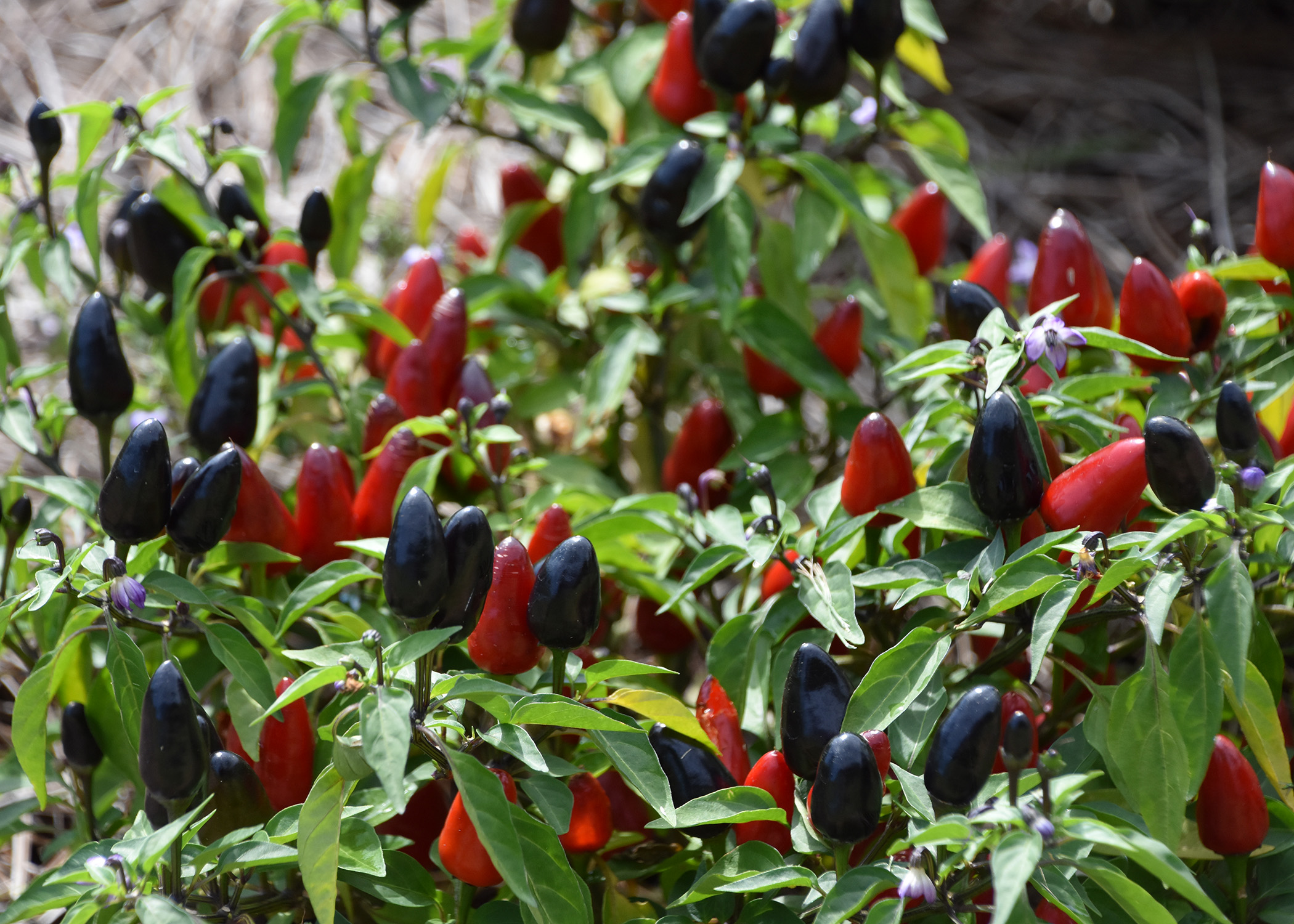 This Black Hawk pepper plant has red to black peppers with green foliage. (Photo by MSU Extension/Gary Bachman)
This Black Hawk pepper plant has red to black peppers with green foliage. (Photo by MSU Extension/Gary Bachman)Check out the black, purple and red pods of Black Hawk. The plants themselves seem to be proud of their fruit, as many pods are held high above the foliage for our viewing enjoyment.
An example of the versatility and value of ornamental peppers is Purple Flash, which was chosen as a Mississippi Medallion winner for 2010. With its purple and white variegated leaves, it is one of the showiest peppers available on the market.
Ornamental peppers love our hot and humid summers, and this helps the plants produce loads of pretty fruit. When the pepper plants are producing, it is very common to have peppers in various stages of coloration. This fantastic feature provides for an ever-changing look in the landscape.
Once fruit has set, it is common for it to remain on the plant for a few months, maintaining the beautiful colors. Only when the peppers begin to dry will their color start to fade.
Ornamental peppers prefer growing in consistently moist soil, but don’t be overly generous, as the plants do not tolerate waterlogged soil. I like growing these landscape standouts in containers or raised beds.
Fertilize with a good, slow-release fertilizer early in the season. Some gardeners stop fertilizing once fruit starts to set, but I like to feed mine with a water-soluble fertilizer through the summer and fall to maintain nutrition at optimum levels.
I realize I’ve told you about a plant that it’s too late to grow this year. If you are interested in some of these varieties for next year, start preparing now. The seeds are available at many online seed houses.

